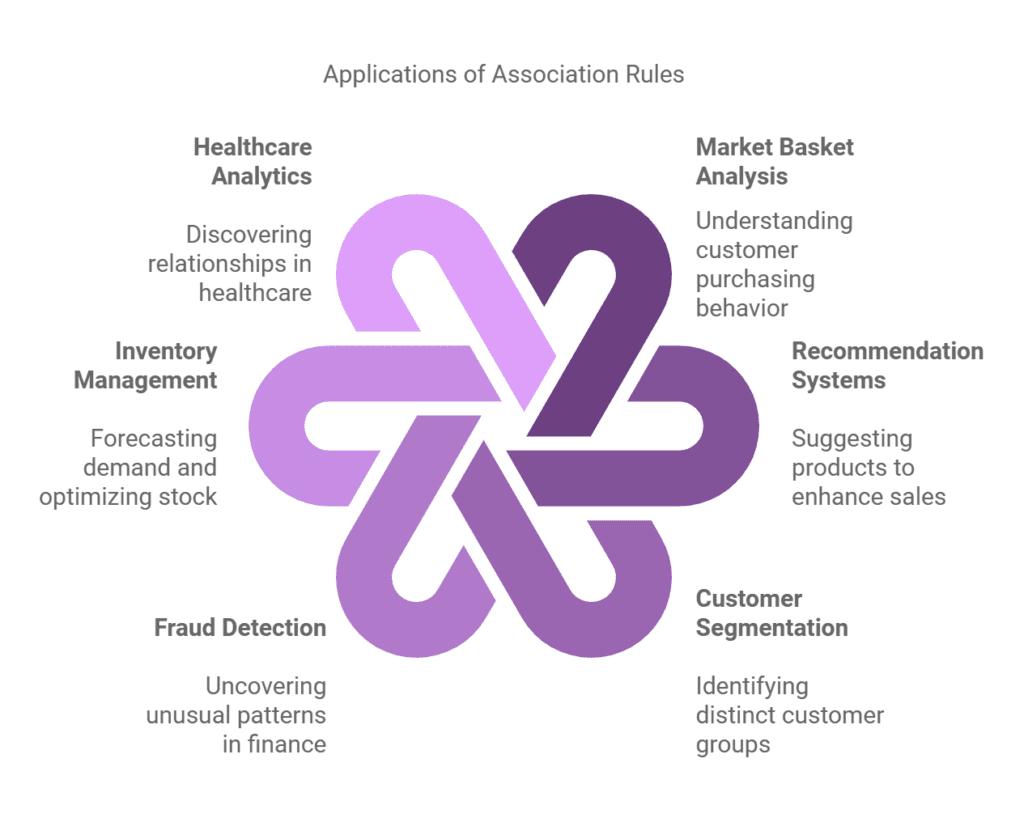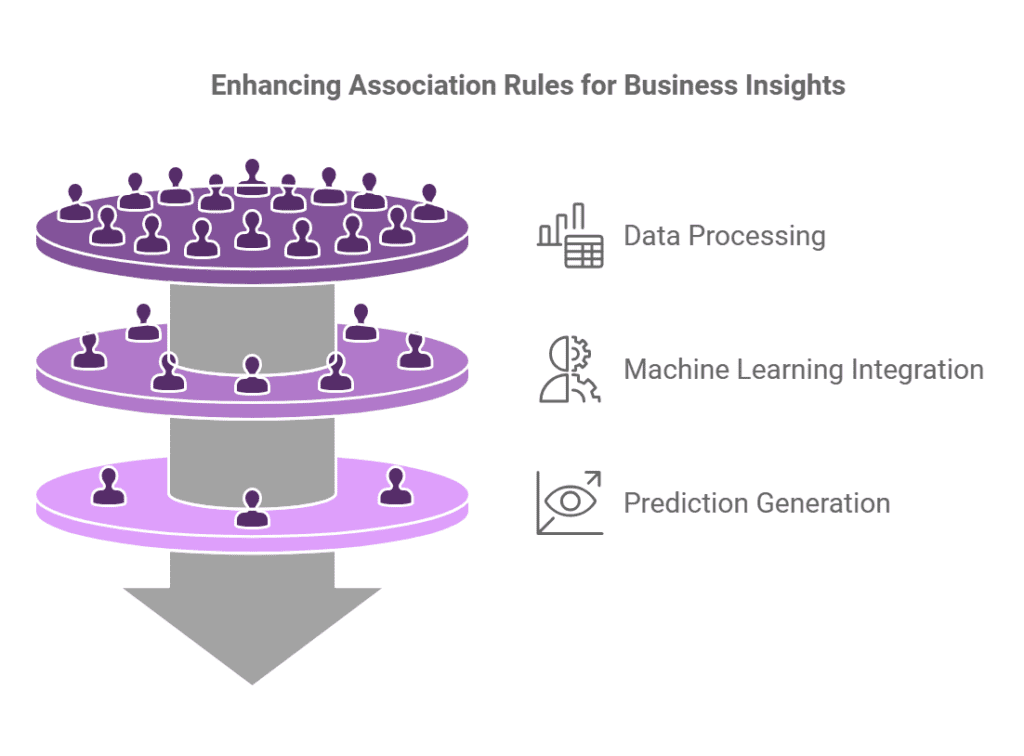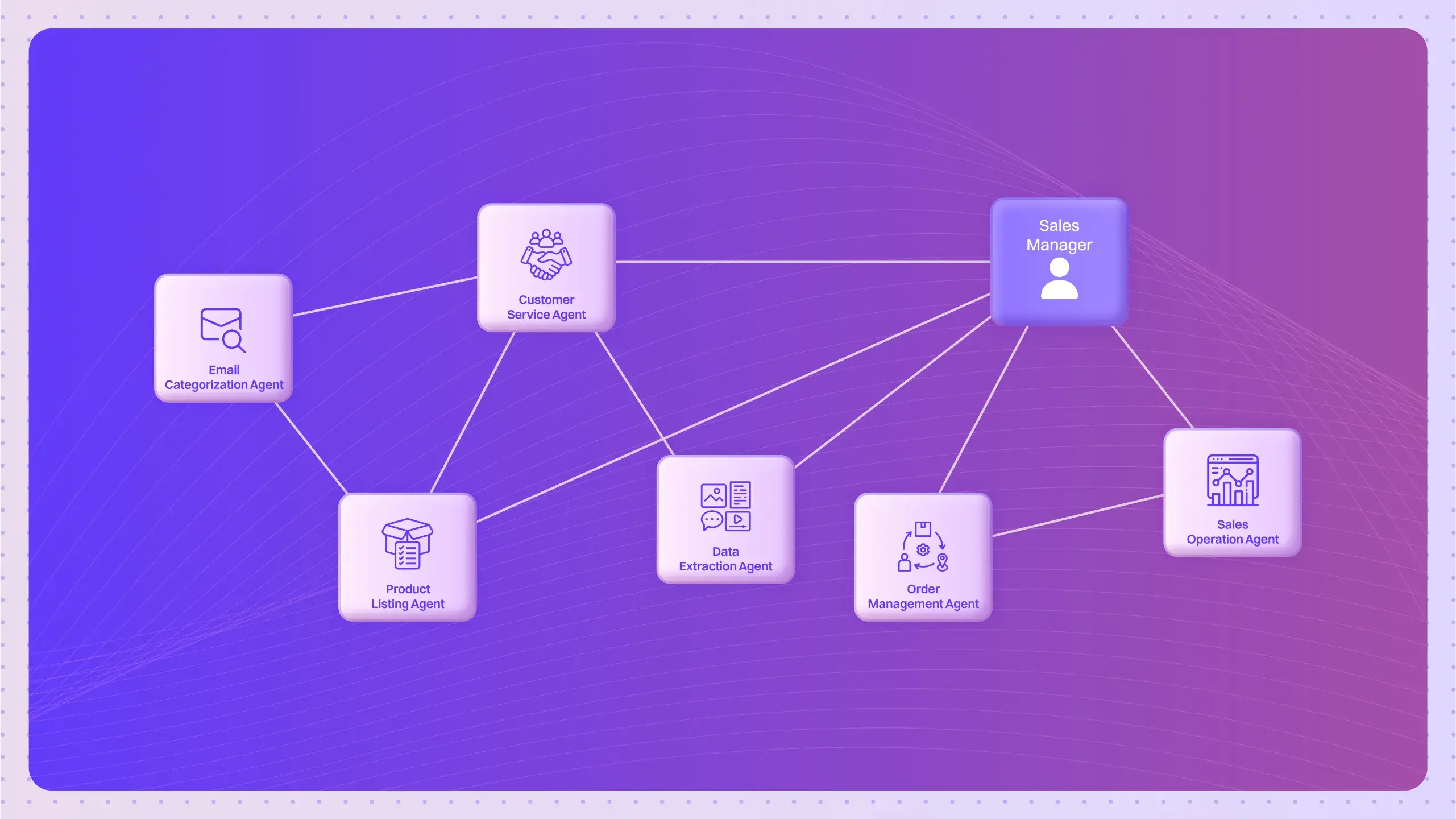What is Association Rules?
Association rules are a data mining technique used to discover relationships between variables in large datasets, primarily in market basket analysis. They help identify patterns and correlations, enabling businesses to understand customer behavior and enhance decision-making.
How do Association Rules Operate in Data Analysis?
Association rules are a fundamental concept in data mining and machine learning that help identify relationships between variables in large datasets. They are particularly useful in market basket analysis, where the goal is to understand the purchase behavior of customers. Here’s how they operate:Data Collection: Gather transactional data from sources such as sales records.
- Frequent Itemset Generation: Identify combinations of items that frequently appear together in transactions using algorithms like Apriori or FP-Growth.Rule Generation: Create association rules from frequent itemsets, typically in the format of {A} -> {B}, indicating that if item A is purchased, item B is likely to be purchased as well.
- Rule Evaluation: Assess the quality of the rules using metrics like support, confidence, and lift to determine their significance.
- Application: Apply the rules for various purposes, such as targeted marketing, inventory management, and enhancing customer experience.
By leveraging association rules, businesses can gain valuable insights into customer behavior, leading to improved decision-making and strategic marketing initiatives.
Common Uses and Applications of Association Rules
Association rules are pivotal in various industries for extracting insights from data. Here are some of their key applications:
- Market Basket Analysis: Association rules help retailers understand the purchasing behavior of customers, revealing which products are often bought together, thereby optimizing product placement and promotional strategies.
- Recommendation Systems: E-commerce platforms utilize association rules to suggest products to customers based on their browsing or purchase history, enhancing user experience and increasing sales.
- Customer Segmentation: Businesses apply association rules to identify distinct customer groups based on purchasing patterns, enabling targeted marketing strategies.
- Fraud Detection: Financial institutions leverage association rules to uncover unusual patterns that may indicate fraudulent activity, improving security measures.
- Inventory Management: Association rules aid in forecasting demand by analyzing product correlations, thus optimizing stock levels and reducing waste.
- Healthcare Analytics: In healthcare, association rules are used to discover relationships between symptoms and diseases, assisting in diagnosis and treatment plans.

What are the Advantages of Association Rules?
Association rules are pivotal in data analysis, particularly in market basket analysis and pattern discovery. Their value lies in the ability to uncover hidden relationships within datasets, leading to actionable insights. Here are the key benefits:
- Enhanced Decision Making: By revealing associations between items, businesses can make informed decisions about product placement and promotions.
- Improved Marketing Strategies: Understanding consumer behavior allows for targeted marketing campaigns, potentially increasing sales.
- Efficiency in Product Bundling: Association rules facilitate effective product bundling, optimizing inventory management and sales strategies.
- Data-Driven Insights: They enable data analysts and market researchers to derive insights based on customer purchase patterns.
- Scalability: Techniques for generating association rules, such as Apriori and FP-Growth, can handle large datasets effectively, making them suitable for varied industries.
Incorporating association rules into analytics processes can significantly enhance the value derived from data.
Are there any Drawbacks or Limitations Associated with Association Rules?
While Association Rules offer many benefits, they also have limitations such as:
- High computational cost for large datasets.
- Difficulty in interpreting rules, especially with numerous variables.
- Potential for overfitting if not managed properly.
These challenges can impact the ability to derive actionable insights and may lead to misleading conclusions.
Can You Provide Real-life Examples of Association Rules in Action?
For example, Association Rules are used by retail companies like Amazon to analyze customer purchase patterns. This helps them recommend products based on items frequently bought together, demonstrating increased sales and improved customer satisfaction.
How do Association Rules Compare to Similar Concepts or Technologies?
Compared to clustering algorithms, Association Rules differ in that they focus on identifying relationships between items in a dataset. While clustering methods like k-means clustering focus on grouping similar data points, Association Rules are more effective for discovering patterns in transactions, which can lead to more targeted marketing strategies.
What are the Expected Future Trends for Association Rules?
In the future, Association Rules are expected to evolve by integrating advanced machine learning techniques and real-time data processing. These changes could lead to more accurate predictions and insights, enabling businesses to respond quickly to consumer behavior.

What are the Best Practices for Using Association Rules Effectively?
To use Association Rules effectively, it is recommended to:
- Clean and preprocess your data thoroughly.
- Choose appropriate support and confidence thresholds.
- Validate rules with domain experts.
Following these guidelines ensures that the insights gained are both relevant and actionable.
Are there Detailed Case Studies Demonstrating the Successful Implementation of Association Rules?
One notable case study involved a supermarket chain that implemented Association Rules to analyze shopping patterns. As a result, they discovered that customers who bought bread also frequently purchased butter, leading to strategic product placement and promotions. This implementation resulted in a 15% increase in sales for those items.
What Related Terms are Important to Understand along with Association Rules?
Related terms include ‘Support’ and ‘Confidence’, which are crucial for understanding Association Rules because they quantify the strength of relationships between items. Support indicates how often items appear together, while Confidence measures the likelihood of one item being purchased given another.
What are the Step-by-step Instructions for Implementing Association Rules?
To implement Association Rules, follow these steps:
- Collect and preprocess your dataset.
- Define the support and confidence thresholds.
- Use algorithms like Apriori or FP-Growth to generate rules.
- Evaluate the rules based on metrics like lift and leverage.
These steps ensure a systematic approach to uncovering valuable insights.
Frequently Asked Questions
What are Association Rules?
Association rules are used to identify relationships between variables in large datasets.
- They help in understanding item co-occurrences.
- Commonly applied in market basket analysis.
How do association rules benefit market basket analysis?
They reveal patterns in customer purchasing behavior.
- Identify frequently bought items together.
- Inform product placement and promotions.
What are the key components of Association Rules?
The main components are support, confidence, and lift.
- Support indicates how often items appear together.
- Confidence measures the likelihood of purchase.
What techniques are used to generate Association Rules?
Common techniques include Apriori and FP-Growth algorithms.
- Apriori generates candidate rules based on support.
- FP-Growth uses a data structure to find frequent itemsets directly.
How can data analysts apply Association Rules?
They can analyze transaction data to derive insights.
- Create targeted marketing strategies.
- Improve inventory management based on customer trends.
What are the limitations of Association Rules?
They can produce too many rules, making interpretation difficult.
- Need for pruning to focus on relevant rules.
- May not capture causal relationships.
In what other fields can Association Rules be applied?
Beyond retail, they can be used in various domains.
- Healthcare for patient treatment patterns.
- Web usage mining for user behavior analysis.







